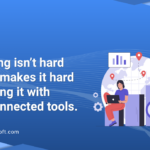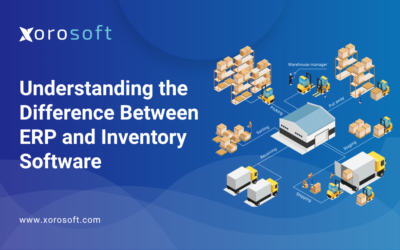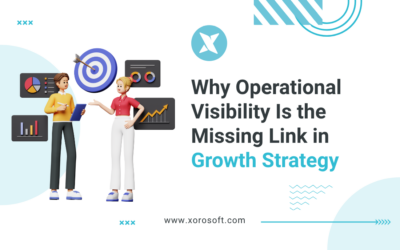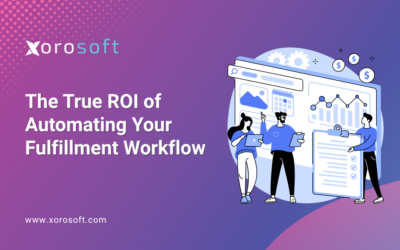
Introduction to Inventory Management and its Challenges
Inventory management is a critical aspect of any business, regardless of its size or industry. It involves the process of overseeing, controlling, and tracking a company’s inventory, from raw materials to finished products. However, managing inventory can be a challenging task, especially as businesses grow and expand. Issues such as stockouts, overstocking, inefficient order fulfillment, and inaccurate data can lead to significant financial losses and operational inefficiencies.
Fortunately, with the advancements in technology, businesses now have access to powerful tools that can help streamline inventory management. One such tool is an Enterprise Resource Planning (ERP) system. In this guide, we will explore what an ERP system is and how it can revolutionize inventory management.
What is an ERP System and How Does It Help Streamline Inventory Management?
An ERP system is a software solution that integrates various business functions and processes into a single, centralized platform. It enables businesses to manage and automate core operations, such as inventory management, accounting, human resources, sales, and more. By consolidating all these functions into one system, an ERP solution provides businesses with real-time visibility, accurate data, and improved decision-making capabilities.
When it comes to inventory management, an ERP system offers several advantages. Firstly, it provides businesses with a holistic view of their inventory across multiple locations, warehouses, and sales channels. This real-time visibility allows businesses to optimize stock levels, reduce excess inventory, and prevent stockouts. Additionally, an ERP system automates key inventory processes, such as replenishment, reordering, and demand forecasting, saving time and improving efficiency.
Benefits of Using an ERP System for Inventory Management
Implementing an ERP system for inventory management offers numerous benefits to businesses. Let’s explore some of the key advantages:
1. Enhanced Efficiency and Productivity
An ERP system automates manual processes, such as data entry, inventory tracking, and order management. This automation reduces human error, improves accuracy, and frees up valuable time for employees to focus on more strategic tasks. By streamlining inventory management, businesses can enhance overall efficiency and productivity.
2. Real-Time Visibility and Accurate Data
One of the biggest challenges in inventory management is having accurate and up-to-date data. An ERP system provides real-time visibility into inventory levels, stock movements, and order statuses. With accurate data at their fingertips, businesses can make informed decisions, prevent stockouts, and optimize inventory levels.
3. Cost Savings and Reduced Financial Risks
Inventory management directly impacts a company’s bottom line. An ERP system helps businesses optimize inventory levels, reduce excess stock, and minimize holding costs. By preventing stockouts and overstocking, businesses can avoid lost sales, minimize storage expenses, and reduce financial risks associated with carrying excessive inventory.
Key Features to Consider When Choosing an ERP Solution for Inventory Management
When selecting an ERP solution for inventory management, it’s important to consider certain key features. These features will determine how effectively the system can streamline your inventory management processes. Here are some essential features to look for:
1. Inventory Tracking and Visibility
An effective ERP system should provide real-time tracking and visibility of inventory across multiple locations, warehouses, and sales channels. It should allow businesses to monitor stock levels, track stock movements, and view item details, such as SKU, serial numbers, and expiry dates.
2. Demand Forecasting and Planning
Accurate demand forecasting is crucial for maintaining optimal inventory levels. Look for an ERP system that offers advanced demand forecasting capabilities, allowing businesses to predict future demand based on historical data, market trends, and seasonality. This will help prevent stockouts and overstocking.
3. Replenishment and Reordering Automation
An ERP system should automate the replenishment and reordering processes. It should generate purchase orders automatically when stock levels reach predefined thresholds, ensuring timely replenishment. This automation prevents stockouts and eliminates the need for manual intervention.
Introduction to Xorosoft ERP and its Inventory Management Capabilities
Xorosoft ERP is a leading ERP solution that offers robust inventory management capabilities. It is designed to streamline and optimize inventory processes, helping businesses achieve operational excellence. Let’s explore some of the key features and benefits of using Xorosoft ERP for inventory management.
1. Centralized Inventory Control
Xorosoft ERP provides businesses with a centralized platform to manage inventory across multiple locations and warehouses. It offers real-time visibility into stock levels, allowing businesses to monitor inventory movements, track stockouts, and prevent overstocking. With centralized inventory control, businesses can optimize stock levels and improve order fulfillment.
2. Advanced Demand Forecasting
Xorosoft ERP incorporates advanced demand forecasting algorithms to help businesses accurately predict future demand. By analyzing historical data, market trends, and seasonality, the system generates accurate demand forecasts. This enables businesses to optimize inventory levels, improve customer satisfaction, and avoid costly stockouts.
3. Automated Replenishment and Reordering
Xorosoft ERP automates the replenishment and reordering processes, eliminating the need for manual intervention. The system generates purchase orders automatically based on predefined stock thresholds and demand forecasts. This automation ensures timely replenishment, prevents stockouts, and improves inventory turnover.
How Xorosoft ERP Integrates with Accounting for Seamless Inventory Management
Integration between inventory management and accounting is crucial for maintaining accurate financial records and streamlining business operations. Xorosoft ERP offers seamless integration between its inventory management module and accounting module, ensuring accurate and real-time financial data. Here’s how Xorosoft ERP integrates with accounting for seamless inventory management:
1. Real-Time Inventory Valuation
Xorosoft ERP updates inventory valuations in real-time by integrating with the accounting module. As inventory items are received, sold, or consumed, the system automatically adjusts the inventory value in the accounting records. This provides businesses with accurate and up-to-date financial information.
2. Cost of Goods Sold (COGS) Calculation
Xorosoft ERP calculates the cost of goods sold (COGS) by integrating with the accounting module. It tracks the cost of inventory items, including raw materials, work in progress, and finished goods, and automatically calculates the COGS for each sale. This ensures accurate financial reporting and helps businesses analyze their profitability.
3. Financial Reporting and Analysis
Xorosoft ERP generates comprehensive financial reports by integrating with the accounting module. Businesses can easily access reports such as balance sheets, profit and loss statements, and inventory valuation reports. This enables businesses to analyze their financial performance, identify trends, and make data-driven decisions.
How to Implement Xorosoft ERP for Effective Inventory Management
Implementing Xorosoft ERP for effective inventory management requires careful planning and execution. Here are the key steps to follow:
1. Define Objectives and Requirements
Before implementing Xorosoft ERP, clearly define your objectives and requirements for inventory management. Identify the specific challenges you want to address and the desired outcomes you want to achieve. This will help you tailor the system to your business needs.
2. Data Migration and Setup
Ensure a smooth transition to Xorosoft ERP by migrating your existing inventory data to the new system. Cleanse and validate the data to ensure accuracy. Set up the system according to your specific inventory management processes, including item categorization, stock locations, and pricing rules.
Conclusion and Final Thoughts on the Importance of Using an ERP System for Inventory Management
In conclusion, implementing an ERP system, such as Xorosoft ERP, is crucial for streamlining inventory management. It offers businesses real-time visibility, accurate data, and automation capabilities, resulting in enhanced efficiency, cost savings, and improved decision-making. By utilizing features such as centralized inventory control, advanced demand forecasting, and seamless integration with accounting, businesses can optimize inventory levels, reduce stockouts, and improve overall operational efficiency.
If you want to take your inventory management to the next level, book a demo with Xorosoft today. Experience firsthand how their ERP system can revolutionize your inventory management processes and help you achieve operational excellence.
Book a Demo with Xorosoft now and streamline your inventory management!









